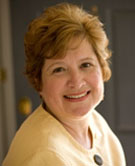DeMystifying Shock Therapy for DepresssionPowerful Patient, 2010 Week 35Host: Joyce Graff, http://powerfulpatient.org, editor@vhl.org 800-767-4845
Carol Kivler has battled depression for decades. Over the past 20 years se has had over 50 successful ECT treatments during my four major bouts with clinical depression. ECT has become my “ladder out of the depression pit” for which I am most grateful. ECT, or electroconvulsive therapy, is commonly known as "shock therapy." Carol shares with Joyce her success with Electric Convulsive Therapy, and encourages others to consider this modality as a way of getting out of deep depression.
About our guest:
Carol Kivler is a passionate consumer advocate, speaker, author and the founder of Courageous Recovery. She speaks to consumers, their loved ones and healthcare professionals to raise awareness, instill hope and combat stigmas surrounding mental health diagnoses and treatments. Carol shares her journey of recovery from four bouts of medication-resistant depression and her positive experience with the life-saving treatment ECT through keynotes, breakouts and Grand Rounds.
Along with Courageous Recovery, Carol is also the founder and president of Kivler Communications which provides executive coaching and customized workforce development training. Carol was the first consumer on the Board of Directors of the National Alliance on Mental Illness (NAMI) – Mercer, NJ and continues to be actively involved in its mission. Carol is also a member of the National Speakers Association (NSA), the American Society of Training & Development, and the MercerCountyCommunityCollege Advisory Commission.
Carol lives in Lawrence Township, NJ and is the proud mother of three grown children and five grandchildren.
About Depression
Joyce and Carol talk about the difference between the depression we all experience from time to time, and the “clinical” depression that requires medical treatment.
Carol shares her own story, descending into depression, working with her doctors to find the right combination of anti-depressant drugs and therapy, and coming to the realization that they were dealing with medication-resistant depression. Four times Carol experienced a “break” that required hospitalization and ECT. She explains how “shock therapy” has improved over the years, and how it can benefit a person like herself whose depression does not respond to any other therapy.
About Demystifying ECT, by Carol Kivle
As a courageous survivor of ECT (Electroconvulsive Therapy), I am often asked to speak to people suffering with depression and their family members about ECT. Many have the same exact questions that I had when I was first asked to consider ECT as a treatment intervention for my clinical depression back in 1990. Today, 20 years later, I’ve had over 50 successful ECT treatments during my four major bouts with clinical depression. ECT has become my “ladder out of the depression pit” for which I am most grateful.
Like many of you, I, too, was terrified at the thought of how ECT was given and more importantly what others might think of me afterwards. The media has portrayed ECT as a barbaric treatment; a treatment only given to “crazy” people in the dark wards of psychiatric hospitals. This life-saving treatment is as far from that reality as it can be. Electroconvulsive therapy is again coming into favor as a treatment for severe depression. According to the American Psychiatric Association, its success rate is 80 percent whereas medication has a success rate of between 40 and 45 percent.
To provide a better understanding of ECT, the following is what a patient encounters:
It is still unclear why ECT helps patients with severe depression. Some feel that the electrical shock and subsequent seizure somehow simulate the brain’s neurons and reconfigure chemicals in the limbic system that regulate and balance the emotions. Alternatively, the seizure may alter the body’s hormonal system to relieve depression. The biggest challenge for me was accepting ECT as a viable treatment option. It was easier for me to understand the treatment than it was for me to accept the treatment. ECT has become my “treatment of choice.” The positive outcome from ECT outweighs the stigma surrounding ECT. I have come to understand and trust ECT as my “silver bullet” in dealing with my severe clinical depression.
Will I Ever Be the Same Again? is available for purchase at the author’s website www.CourageousRecovery.com, Amazon, and BarnesandNoble.com. Fifteen percent of the proceeds from the sale of this book will go to NAMI-Mercer to support their wonderful services.
The National Association on Mental Illness can be found at www.nami.org
|
